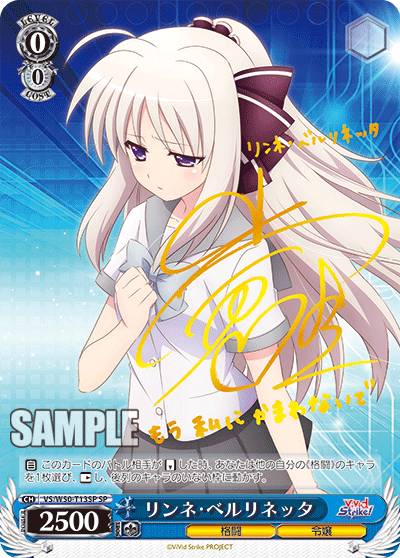Combat tricks are an interesting topic that can dynamically change the way the game is played. When using combat tricks, you may regard the battlefield differently, making plays that can cause your opponent to think twice before arranging their swings or being more careful with the cards they place on the board. More importantly, combat tricks are ways to play around the field besides relying on power, give you more options on the field to maneuver around your opponent’s cards rather than contesting them directly.



VS/W50-T13SP-SP リンネ・ベルリネッタ (center)
TL/W37-056S-SR ララ・サタリン・デビルーク (right)
When speaking about combat tricks, I do not mean to talk about the usage of backups to affect power in battles. I mean more so to the array of different card profiles that can affect the positions of cards or manipulate advantage during the attack phase of the game. There are many different card profiles that match this description, some that work cross-turn and others only during specific phases of the game.
The main draw or use of combat tricks is to affect combat in a way that deters or affects your opponent’s combat phase, disrupting their effects and overall game plan. There are many ways to do this. Some cards swap themselves with other cards on stage, making it difficult for your opponent to reverse some specific cards and save your field. Other cards can allow you to save your other cards on board by bouncing them back to hand or moving them to an empty slot in a safer zone on your field. Either way, combat tricks are meant to provide some form of advantage to yourself, helping to save resources and potentially impact and frustrate your opponent’s game plan.



MG/S39-009U 中学生 忍野忍 (center)
DDM/S88-011U 口の悪い狼人 ベート (right)
Unfortunately, the reality is that combat tricks are nice to have but are not present in every set or deck. Certain situations on board or other areas may suggest you not perform a combat trick due to costs or potential loss in advantage. Sometimes combat tricks aren’t enough to secure you a victory on board either due to certain card constraints or overall board presence from your opponent.
Despite the fact that these cards are often evasive, a common downside is the lower power from these cards, making them prime targets to be sniped by larger threats. Furthermore, some of these evasive maneuvers have other conditions or costs attached, causing them to potentially fail in certain conditions or be a little too much of a burden to perform under the wrong circumstances. Still, these tricks are quite useful, potentially turning the tide in battle or a moment in the game. It is also important to notice these tricks and potentially synergies in the decks that run them to better your own knowledge for some of these matchups.
Going through each individual combat trick is tedious, not to mention difficult, since combat tricks are used based entirely on circumstance and situation. I will say to carefully read your cards’ effects and observe your opponent’s to see when best to use them or whether to use them at all. You may have to chain multiple effects together or use them during a specific phase during either player’s turn. Keep in mind that the failure chance does exist and should be taken note. As mentioned before, some combat tricks do carry a risk which can potentially be fatal such as milling a climax during the late game from your mill runner.
Please feel free to look into the profile tags to learn about some common combat trick cards and other named card effects.